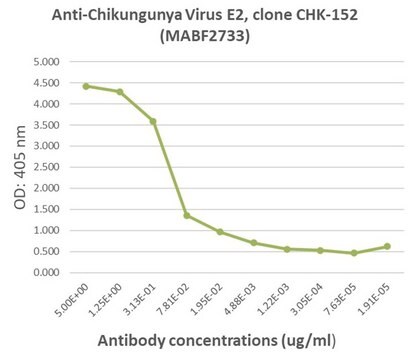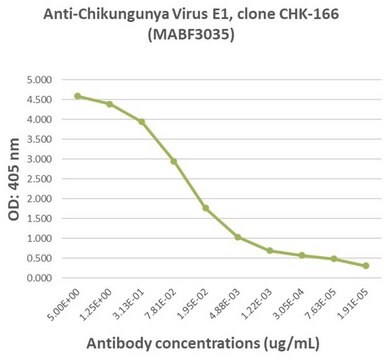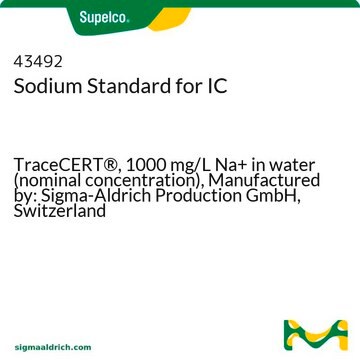MABF2052
Anti-Chikungunya virus Antibody, clone 3E7b
clone 3E7b, from mouse
Sinônimo(s):
CHIKV
About This Item
Produtos recomendados
fonte biológica
mouse
forma do anticorpo
purified immunoglobulin
tipo de produto de anticorpo
primary antibodies
clone
3E7b, monoclonal
reatividade de espécies
virus
embalagem
antibody small pack of 25 μL
técnica(s)
ELISA: suitable
immunocytochemistry: suitable
neutralization: suitable
western blot: suitable
Isotipo
IgMκ
modificação pós-traducional do alvo
unmodified
Descrição geral
Especificidade
Imunogênio
Aplicação
Inflammation & Immunology
Immunocytochemistry Analysis: A representative lot detected Chikungunya virus in Immunocytochemistry applications (Lam, S., et. al. (2015). MAbs. 7(6):1178-94).
Immunocytochemistry Analysis: A 1:100 dilution from a representative lot detected Chikungunya virus in BHK cells infected with Chikungunya virus. (Courtesy from an independent lab).
Neutralizing Analysis: A representative lot neutralized Chikungunya virus in Neutralizing applications (Lam, S., et. al. (2015). MAbs. 7(6):1178-94).
ELISA Analysis: A representative lot detected Chikungunya virus in ELISA applications (Lam, S., et. al. (2015). MAbs. 7(6):1178-94).
Qualidade
Isotype Analysis: The identity of this monoclonal antibody is confirmed by isotype test to be mouse IgMk.
forma física
Armazenamento e estabilidade
Outras notas
Exoneração de responsabilidade
Not finding the right product?
Try our Ferramenta de seleção de produtos.
Certificados de análise (COA)
Busque Certificados de análise (COA) digitando o Número do Lote do produto. Os números de lote e remessa podem ser encontrados no rótulo de um produto após a palavra “Lot” ou “Batch”.
Já possui este produto?
Encontre a documentação dos produtos que você adquiriu recentemente na biblioteca de documentos.
Nossa equipe de cientistas tem experiência em todas as áreas de pesquisa, incluindo Life Sciences, ciência de materiais, síntese química, cromatografia, química analítica e muitas outras.
Entre em contato com a assistência técnica







